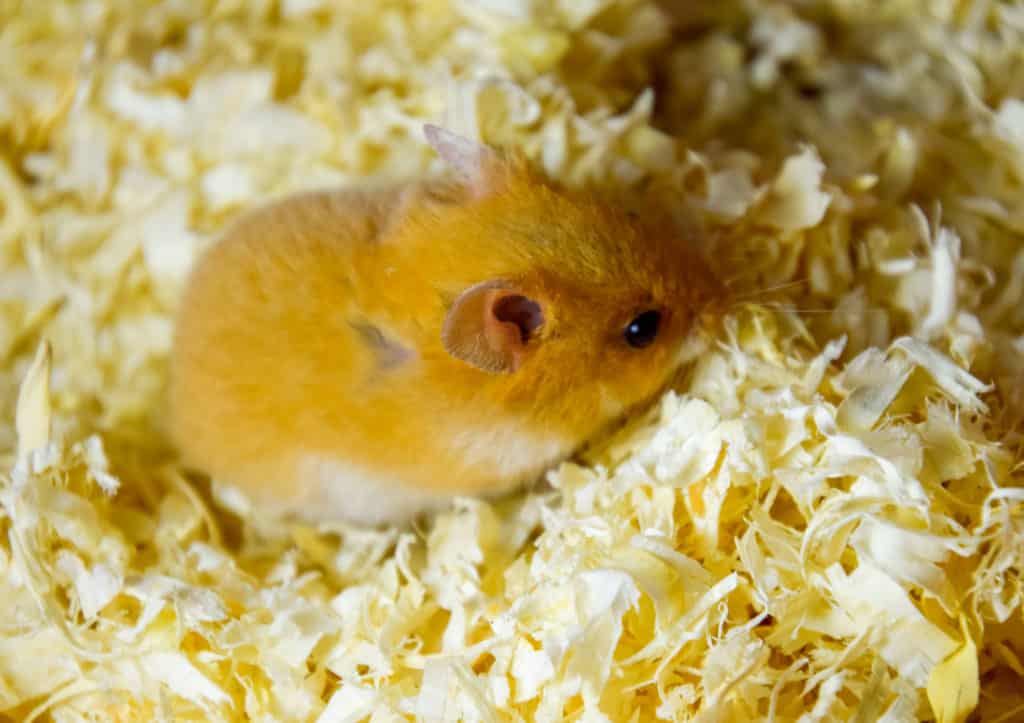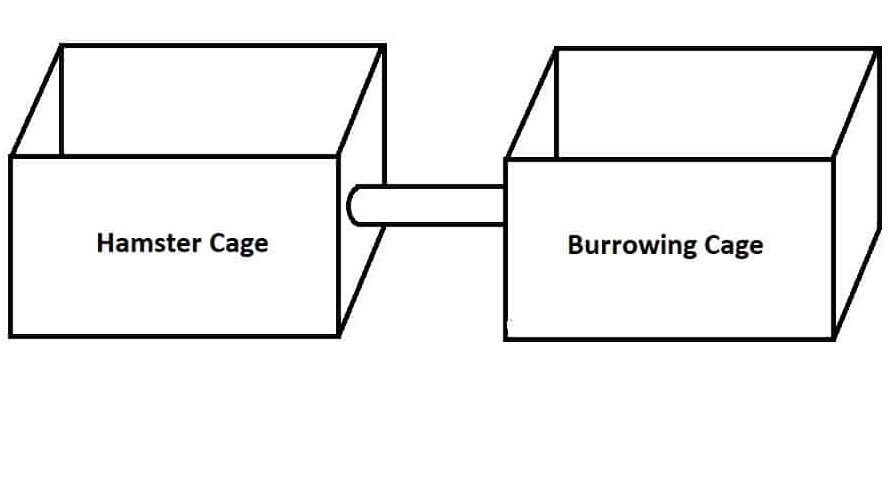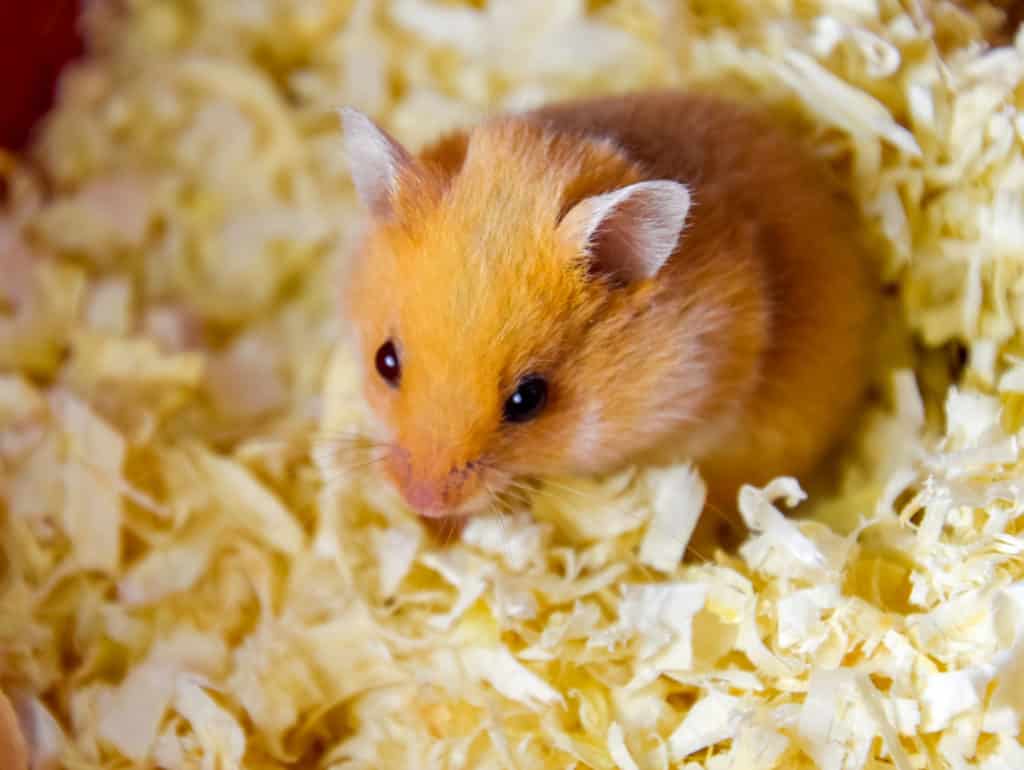If you have just purchased or adopted a hamster, it is natural for you to worry about his behavior. Why does he sleep in the morning? Why does he freeze suddenly? And why does he get scared of loud sounds? This blog post goes into depth into one such specific behavior – Your hamster’s burrowing behavior. Find out if it is good or bad for your hamster to burrow. If it is good, how can you enhance it? If it is bad, how can you stop it? Continue reading and find out.
Things to know about your hamster’s burrowing behavior
Why does a hamster burrow?
A hamster’s body cannot regulate its temperature as effectively as human beings. So, hamsters cannot survive in extreme temperatures. Both extremely hot and extremely cold climates can be deadly for them.
Moreover, hamsters are small prey animals. To reduce the risk of being hunted, they are primarily active at dawn and dusk when most predators have either gone to sleep or have just awakened. They sleep for the rest of the time. But if hamsters were to sleep on open ground, any predator would spot them quickly and eat them.
Hence, living under the ground is their only option.
Even if the places where hamsters live reach extreme temperatures, under the ground, temperatures are moderate and don’t fluctuate as much. Moreover, big predators cannot fit into small burrows created by hamsters.
So, it isn’t surprising that evolution has made hamsters into amazing diggers. Using their forelegs, hind legs, teeth, and snout, they can easily dig into the ground, creating a network of tunnels. The loose sand in many of the places where hamsters live makes this process easy.
Hamsters love to keep things highly organized. So, they have different chambers for different purposes. They have separate chambers for nesting, hoarding, caring for their young, and urinating. The network of tunnels they create leads to these chambers and openings on the ground.
So, as you can see, a hamster’s ability to burrow is what helps him survive in the wild. Therefore, burrowing has become the natural instinct of a hamster.
Is it healthy for a hamster to burrow?
Your pet hamster might live in a completely different scenario than a wild hamster. He doesn’t have to worry about the temperature fluctuations because you maintain the room temperature between 18°C and 24°C. He doesn’t need to worry about a predator attacking him suddenly (Assuming that you don’t have an aggressive pet like a cat or a dog).

But that wouldn’t stop your hamster from burrowing. After all, it is only his natural instinct. Hence, if your hamster starts burrowing into the bedding you put into his cage, you have nothing to worry about because it is only natural. It is healthy for your hamster to burrow. But whether your hamster burrows and how much he burrows ultimately depends on his own personality. Some hamsters love to burrow. Some do not. So, if your hamster doesn’t burrow, it doesn’t necessarily mean that he is unhealthy or unhappy.
Do all hamsters burrow?
Hamsters located in the wild have been found living in burrows. But there are 19 different types of hamsters. So, the extent to which a hamster burrows can differ based on the species and personality of the individual hamster. Hence, to understand how vigorously each species can burrow, it’s essential to know how deep the burrows of each species are found in the wild.
Do Syrian hamsters love to burrow?
Syrian hamsters (also known as the Golden hamster) love to burrow. In the wild, they were found living in burrows. But none of these burrows contained more than one adult (Source: Wikipedia). But it is not surprising because, unlike dwarf hamsters, Syrian hamsters are strictly solitary and highly territorial animals.
Wild Syrian hamsters can dig several feet into the ground to build their burrows. The first domesticated Syrian hamster was found in a burrow eight feet below the ground. So, these hamsters are excellent diggers and, in general, love to burrow. So, you should have ample bedding for them to burrow. A minimum of 6 inches of bedding is required (Source: Smiley Rodent).
But is 6 inches of bedding adequate for a Syrian hamster? More on this in a later part of this blog post.
Do Roborovski hamsters love to burrow?
Roborovski hamsters are the smallest hamster species. But don’t be fooled by their size. The burrows of wild Roborovski hamsters are found up to six feet below the ground. The loose sand in the places they live makes the digging process much easier. So, if you have a Roborovski hamster, you can expect him to be a great digger. Therefore, a substrate or bedding of at least 6 – 7.5 inches is needed (Source: Wikipedia).
Do Winter White hamsters love to burrow?
Winter White hamsters (also known as Djungarian hamsters) are a dwarf hamster species. They are smaller than Syrian hamsters. In the wild, they have been found living in burrows up to 3.3 feet below the ground. But funnily, that doesn’t mean that they are excellent diggers because they show a preference for taking over the burrows of other animals instead of digging their own. Yet, that doesn’t mean that you should cut down on the amount of bedding for your Winter White hamster. Even for Winter White hamsters, 6 – 7.5 inches of bedding is recommended (Source: Five little hams).
Do Campbell hamsters love to burrow?
Just like Winter Whites and Roborovskis, Campbells are also a dwarf hamster species. In the wild, they live in burrows dug up to 3.3 feet below the ground. In many instances, they are found sharing their burrows with other animals. For Campbell hamsters, too, bedding of at least 6 inches is recommended.
Do Chinese hamsters love to burrow?
Chinese hamsters are also smaller than Syrian hamsters. In the wild, they dig their own burrows where they live. For Chinese hamsters too, at least 6 inches of bedding is recommended.
Now that you know that all species of hamsters love to burrow, what is the next step you should take? Of course, the next step is to create an environment where your hamster can burrow to his heart’s content.
How to help your hamster burrow to his heart’s content?
Bedding
As explained above, almost all pet hamster species are excellent diggers. So, they love to burrow. And for all of them, nearly 6 inches of bedding is needed.
Many people recommend having 6 – 8 inches of bedding for Syrian hamsters. But as you can imagine, while 6 inches of bedding may be enough for dwarf hamsters to burrow, it might be inadequate for Syrian hamsters. After all, when fully grown, Syrian hamsters are almost 6 inches long on average. Some of them might grown up to 8 inches long. So, if they try to burrow vertically downwards, 6 – 8 inches of bedding won’t suffice. Hence, some people argue that more bedding, maybe up to 18 inches, might be needed for pet Syrian hamsters (Source: Hamster Hideout).
Moreover, studies found that when offered 16 or more inches of bedding, Syrian hamsters were found to burrow more and remained healthier than those that were offered just 4 inches of bedding. They also showed significantly less wire-gnawing behavior, indicating that they were under less stress than their counterparts who were provided less bedding (Source: Science Direct). So, it is safe to say that providing more bedding to your hamster can have a noticeable effect on his well-being.
But the amount of bedding you can provide your hamster also depends on the amount of space you have at home, how big your hamster cage is, and how much money you are willing to spend on bedding.
How much bedding do you need to buy?
As explained above, the size of the cage influences the amount of bedding you need to buy (Source: Hamster Geek). Let’s assume that you have a hamster cage that is 30 inches long and 20 inches wide. Then,
Surface area = 30 inch x 20 inch = 600 sq. inches.
Let’s say that you want to fill it with 6 inches of bedding. Then,
Total volume of bedding = 600 sq.inches x 6 inch = 3600 cubic inches.
But bedding is sold in liters and not in cubic inches, and one cubic inch is just 0.01638 liters. So,
Volume of bedding to purchase = 3600 cubic inches x 0.01638 litres/cubic inch = 59 litres.
So, to provide your hamster with 6 inches of bedding in such a cage, you would need to buy 59 liters of bedding. The sizes of some common cages and the volume of bedding you need to buy for them are listed below.
| Cage | Length | Width | Depth of Bedding | Volume of bedding |
| Prevue Pet Products 528 Small Pets Cage | 32.5″ | 19″ | 6″ | 61 liters |
| Aqueon Standard Glass Aquarium Tank, 55 Gallon | 48.75″ | 21.25″ | 6″ | 102 liters |
| Savic Mickey 2XL Hamster Cage | 31.5″ | 20″ | 6″ | 62 liters |
| Tucker Murphy Pet Romelia Cage | 36″ | 18″ | 6″ | 64 liters |
Which cage is best for burrowing?
Hamster cages can be broadly divided into two categories – Wired/Barred cages and Tanks/Aquariums. Even though wired cages are more commonly purchased, glass tanks are better for burrowing.
If you fill a wired cage with a lot of bedding, the bedding will spill out of the cage when your hamster burrows. So, the place around the cage will become messy, and you must clean it every day. Moreover, the amount of bedding in the cage will also keep declining every day. So, you may have to spend more on bedding. These problems don’t occur in the case of glass tanks and aquariums. So, they are better suited for burrowing.
Which bedding is best for burrowing?
Among the different bedding materials available, Aspen wood shavings and paper-based substrates are the best. If none of the two are available, you can use wood pellets. Wood pellets are expensive for you and less comfortable (than the other types mentioned above) for your hamster. But they are better than nothing at all.
You should avoid pine and cedarwood shavings, corn cob, and sawdust because they are all dangerous for your hamster.
How to layout the bedding to encourage your hamster to burrow?
All wild hamsters burrow. That is how they manage to escape from extreme weather and dangerous predators. So, burrowing is an instinct of a hamster. Hence, if your hamster doesn’t show an interest in burrowing, you can follow the process mentioned below to encourage him to burrow (Source: Hamster Society Singapore).
- Prepare your hamster’s cage – First, remove everything from your hamster’s cage except the bedding. This includes hamster toys like wheels and hamster hideouts. Then remove soiled bedding. But don’t remove the entire bedding. Hamsters have the habit of marking their territory with their scent. Since their eyesight is bad, they recognize their home with the help of this smell. So, if you remove the entire bedding, your hamster’s surroundings will smell totally new to him and stress him out. Hence, leave at least one-third of the old bedding in the cage.
- Add new bedding – Now add fresh bedding and mix it with the old bedding. There should at least be seven inches of this mixture, so there is enough room for your hamster to burrow. The best bedding for burrowing is shredded paper because it holds the burrows intact compared to circular paper and aspen wood shavings.
- Add hay – Add hay to the bedding mixture you created in the previous step. The ratio of hay to bedding can be up to1:3. In this process, hay isn’t meant to be a snack for your hamster. Instead, it acts as glue, binding the bedding together and creating a stable structure that can hold the burrow. The hay you add should be soft enough so that it doesn’t hurt your hamster’s little paws. The hays best suited for this purpose are Timothy hay, alfalfa, and orchard grass.
- Add bedding toppers – Add bedding toppers to the mixture of bedding and hay, and mix them thoroughly. Bedding toppers, like Bunny Nature All Nature Maxi Mix Botanicals, are mixes that are similar to the diet your hamster eats in the wild. They are not only tasty but healthy as well. So, they serve as perfect incentives for your hamster to start burrowing.
- Compress the mixture – Mix the above mixture properly. Then place your hamster’s hideout on the bedding and cover it with the bedding mixture. Now compress the entire bedding a little bit. Sprinkle some bedding toppers here and there.
- Put back everything inside the cage – Finally, put everything you removed in the first step, like hamster wheels, etc., back into the cage. Sit back and watch your hamster start burrowing to his heart’s content.
FAQ
Will my hamster suffocate in the bedding while burrowing?
Hamsters are creatures that live underground. They have mastered the art of digging and building burrows. So they won’t get suffocated while burrowing. Hence, as long as the bedding materials you use are safe and not harmful to your hamster, you don’t have anything to worry.
How to find out if my hamster likes to burrow?
Even though hamsters in the wild are good diggers, not all hamsters bred domestically may love burrowing. So, how do you find out if your hamster loves to burrow?
The best way to determine if your hamster loves burrowing is to observe your hamster’s burrowing behavior by creating a separate burrowing area within the cage (Source: Hamsters 101).
Don’t just add more bedding to one side of the cage to create an elevated area for burrowing. If you do so, the bedding might spread onto other areas of the cage and, with time, even out.
Instead, create a partition within your cage using cardboard or something else. You can also place a big tissue box inside the cage to be used as a burrowing area.
If your hamster is interested in burrowing, he will spend a lot of time in the burrowing area. Then, you can remove the partition and add more bedding to the entire cage so that your hamster has more room to burrow.
What to do if my hamster doesn’t like to burrow?
As explained previously, every hamster has a unique personality, just like human beings. And it is not unhealthy if your hamster doesn’t burrow. So, if he doesn’t like to burrow, you don’t have to worry too much about it.
What to do if my hamster’s cage isn’t big enough to accommodate sufficient bedding for burrowing?
If you don’t have a cage that is big enough, you can create another separate cage for burrowing. But it wouldn’t be practical if you must pick your hamster from his cage and put it in the burrowing cage every day when you want him to spend some time burrowing. Ideally, your hamster should be able to burrow whenever he wants to.
So, you can create an opening in both the cages and connect them using a small tunnel (See the illustration below). Then your hamster can move from one cage to another whenever he wants to.




